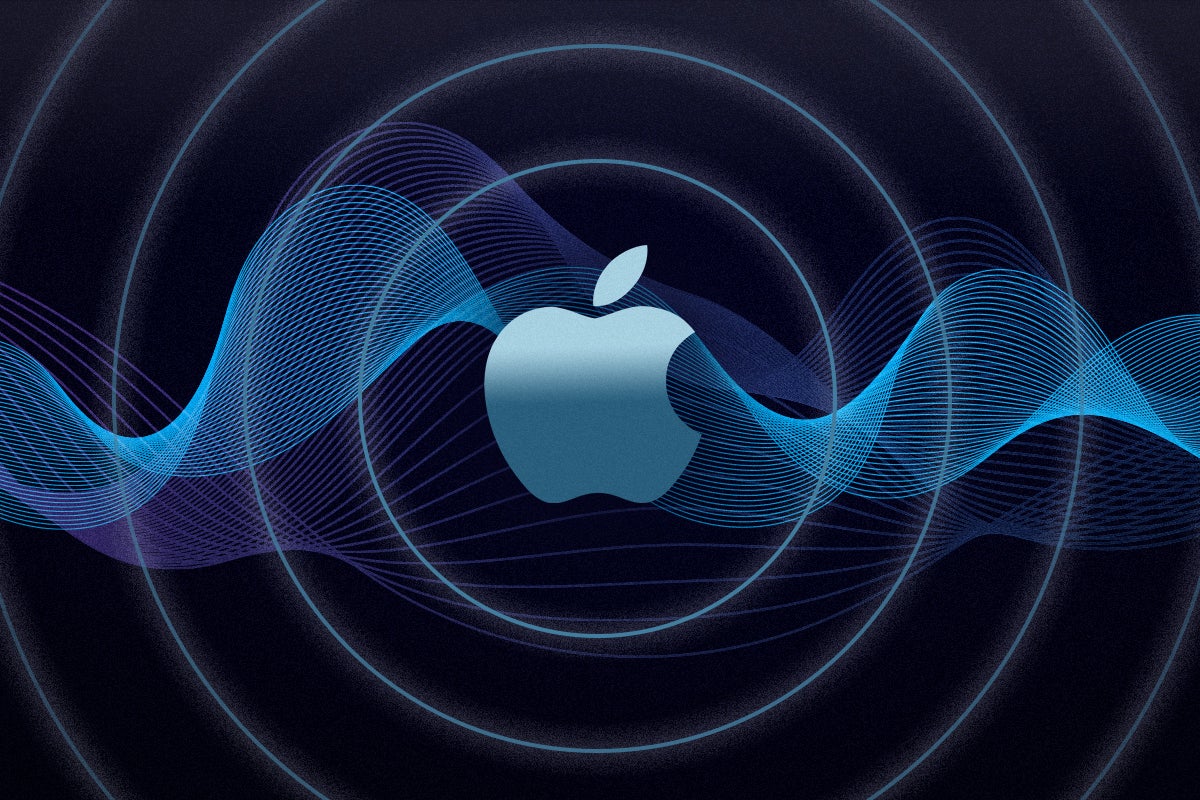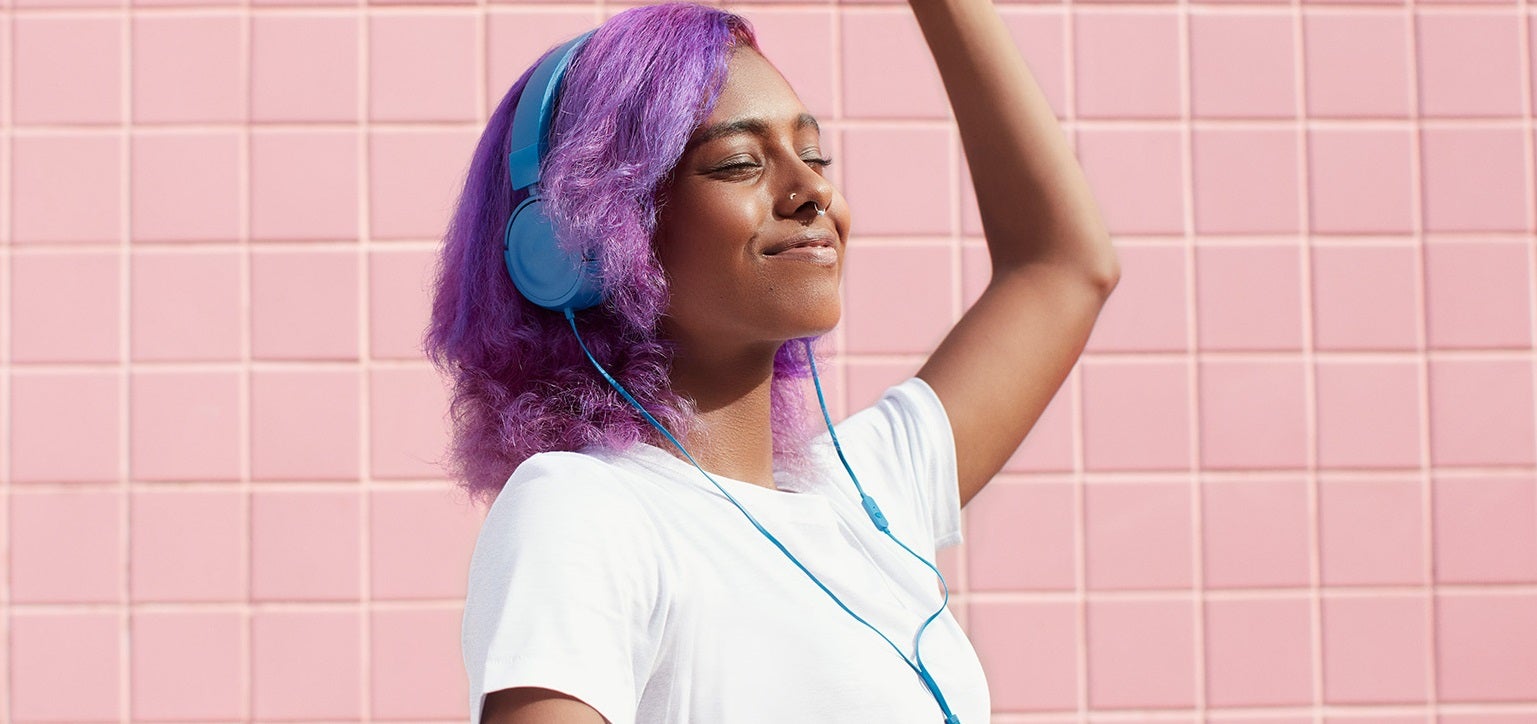What is Sony 360 Reality Audio? The immersive audio format explained
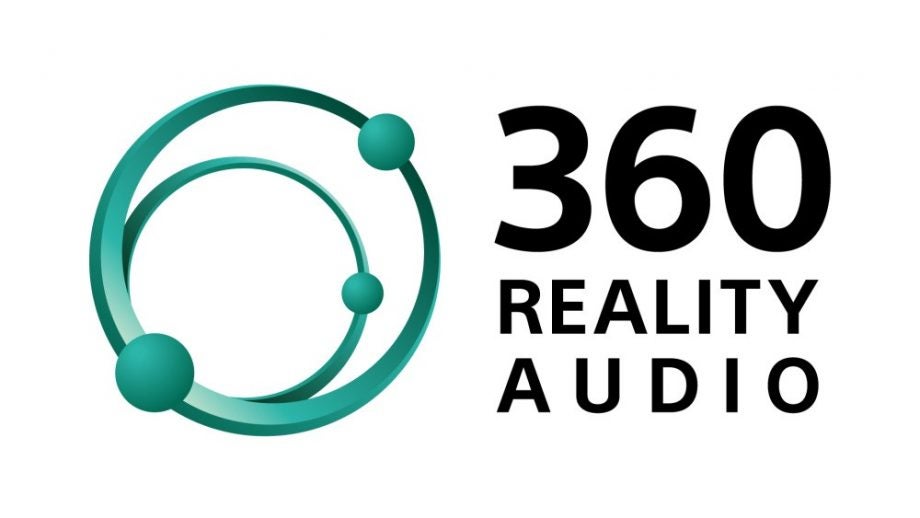
3D audio goes by many names, definitions, and forms in the current market, and one of those formats is Sony’s 360 Reality Audio.
While the jump in interest in immersive audio has certainly been given a push by Apple’s adoption of Dolby Atmos for its music streaming service, Sony got there a couple of years earlier in 2019 and has sought to bring it to a wider audience.
The idea is simple – it’s audio that you can hear all around you, creating an immersive soundscape to listen to your favourite tunes and films. So, how does it work and is it everything Sony makes it out to be?
What is Sony 360 Reality Audio?
Stereo sound, quadraphonic sound, 5.1-channel surround sound etc – they all have something to recommend them. What everyone likes less is competing audio formats that do the same thing.
At first glance, it would seem Sony’s ‘3D’ audio format – 360 Reality Audio – falls into the ‘same-thing-different-banner’ category. Object-based audio, where a soundtrack is mastered into numerous channels to create front, rear, sides and overhead of a soundfield, can be great when used right – but we already have the likes of Dolby Atmos and DTS-X.
Anything from a home 5.1.4 system to a state-of-the-art commercial cinema sounds thrillingly complete when it has a Dolby Atmos soundtrack to play with. Four overhead channels of information (in the home), or upwards of 64 overhead channels in a cinema, each receives discrete, carefully positioned information. The sense of scale, and of wide-ranging, believable movement in the right setting, is always impressive.

360 Reality Audio does the same thing, essentially, although previously the emphasis was squarely on music but has now broadened its talents to include cinema and gaming.
Sony has built 360 Reality Audio around the MPEG-H 3D Audio codec, which is able to support 64 individual channels. The format is open source, so anyone from small companies to individual artists can get involved.
And Sony has persuaded the Big Three record companies – Sony, Universal and Warner Music – as well as high-profile streaming services that includes TIDAL, Amazon Music HD and Deezer – to distribute the content.
How does Sony 360 Reality Audio work?
The idea is to place the listener in the thick of the audio action. Any element of a recording – by which we mean specific individual sounds, like a high-hat cymbal, a person’s footsteps in a game, the engine of car, or Bez-style maraca – can be positioned anywhere in the 360-degree sound field.
It can be finessed to give the impression of a specific angle or distance, painting a detailed and expansive audio picture, with the listener in the front row or even on the stage itself.
Sony states its 360 Reality Audio will work with headphones from most manufacturers, so theoretically all that’s required is a subscription to the premium tier of a partnering streaming service (and some headphones).

However, if you want a more personalised experience and happen to have either a pair of compatible Sony headphones or headphones from another brand that support the tech (like Audio Technica), you’ll be prodded in the direction of the headphones’ respective app.
There you can capture images of your ear with the mobile device’s camera (you may want someone’s help for that), and set up an optimal hearing profile before it shoots you off to enjoy 360 Reality Audio tracks in streaming services such as Tidal and Deezer’s seperate 360 RA app.

What are the benefits?
Most consumers (and perhaps even professionals) would say that immersive audio is no more than party trick and a gimmick, a feature that doesn’t present a better experience for the listener compared to stereo.
However, there are good reasons for mastering engineers and the public to venture into the immersive sound as we learned at a Sony press event held in Amsterdam via a presentation from mastering engineer Maria Triana.
She alluded that stereo is of course made up of two channels – left and right – but this can be an issue as to where to positions instruments and vocals within the soundfield, and how to manage all the sounds and frequencies vying for the same space in a two-channel mix.
With immersive audio that’s not an issue as it takes place on a bigger soundfield where instruments and vocals aren’t fighting for the same space, and frequencies from highs to mids and lows have more room to breathe. Vocals don’t have to be compressed to highlight them above other instruments, there is (or at least should) be more room to breathe and allow the listener to focus on different elements in a track.

Another benefit is that with immersive audio, you can experience music in a more natural way. With stereo content, mastering engineers create reverb and the ‘room’ the music takes place in, while in an immersive soundscape, the onus moves to the reflections of the sound around the whole room, so it is more like how music is created and listened in a ‘live’ setting.
A third, and perhaps most obvious benefit to listeners is movement of sounds. A mastering engineer can place sounds around the virtual room, but also have those sounds move about, the decay of a hi-hat cymbal can move from the front of the room to the rear.
A good immersive can give the impression of sounds all around you, but the immersive effect can be down to the number of elements in a mix and is not always obvious. It’s down to how the mastering engineer interprets and manipulates those elements. Some songs are suited to being in immersive audio, others less so.
Which products support 360 Reality Audio?
When the service was launched in 2019, Sony said they estimated they’d be around 1000 tracks in the format. At the end of 2023, Sony said there were over 1000 tracks available – that suggests there hasn’t been a huge uptake in developing for the format.
Artists with music in 360 Reality Audio format includes the Foo Fighters, London Grammar, Cypress Hill, Alicia Keys, Pharrell Williams, Paloma Faith, HAIM, Outkast, and RUN-DMC, so you have a decently diverse collection of musical genres to sample, as well as songs new and old that have been remastered to take advantage of what 360RA offers.
In terms of hardware, the unsurprising news is that Sony is doing the heavy lifting.
Sony headphones feature the tech from the WF-1000XM5, to the LinkBuds S, to the affordable CH720N over-ears. Whatever your purchase, they’ll be a little card in the packaging promoting 360 Reality Audio.

Sony sells its own wireless speakers with the Wi-Fi-enabled SRS-RA5000 and SRS-RA3000. They use the company’s ‘Immersive Audio Enhancement algorithm’ to create that room-filling, live music feel. The RA500 features seven woofers – three firing upwards, three to the sides and one in the centre. The RA300 is less complex (and cheaper) with two tweeters, two passive radiators and a full-range driver.
The first speaker on sale that was able to handle Sony’s 3D audio standard was Amazon’s Echo Studio (you’ll need an Amazon Music HD subscription, though).
Sony’s added its soundbar line-up into the mix with the HT-A7000, HT-A5000, HT-A3000 all able to play content in 360 Reality Audio, as well as surround sound systems and speaker systems such as Sony HT-AX7 and HT-A9 models.
Sennheiser has also gotten into the game by updating its Ambeo soundbar, which can now service 360 Reality Audio content via a Chromecast connection. Currently only nugs.net music service provides Chromecast streaming for 360 RA content.

More products are expected to arrive – Sony’s determination to democratise 360 Reality Audio means more Alexa-enabled, or Chromecast built-in devices will be able to support the format. Sony has worked with Google to embed the MPEG-H 3D audio into the Android code and widen its compatibility.
And Sony’s partnership with chipset companies like Qualcomm and MediaTek should, hopefully, make 360 Reality Audio compatibility across a lot more consumer hardware likely too.
Are there different versions of 360 Reality Audio?
Sony has expanded 360 Reality Audio into several directions that criss-cross with each other under the umbrella of 360SST (360 Spatial Sound Technologies).
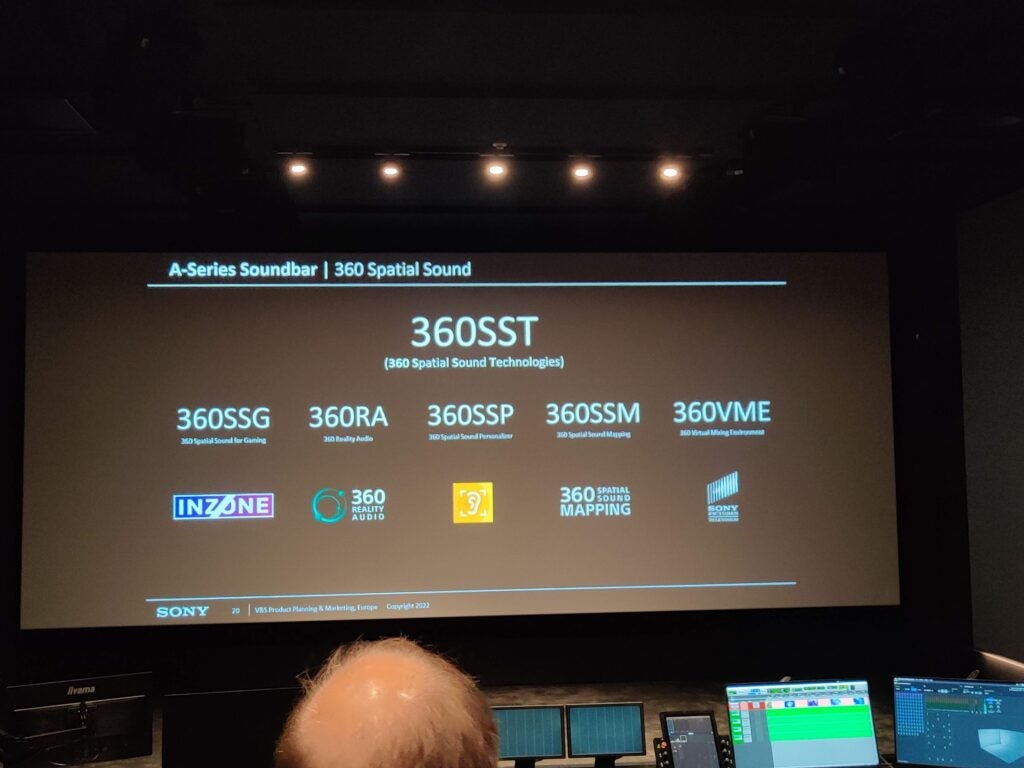
We’ve talked about 360 Reality Audio, which is for music, but there’s also 360SSG (360 Spatial Sound for Gaming) supported by Sony’s Inzone gaming headsets. Those headphones can place you in the middle of a video game, with sounds coming from in front of the character and behind (a rather scary proposition in the Resident Evil 4 remake).
360SSP (360 Spatial Sound Personaliser) tailors audio to the shape and size of your ears so you’re getting the spatial effect as it’s meant to be heard. This is available through a dedicated app on Android and iOS platforms.
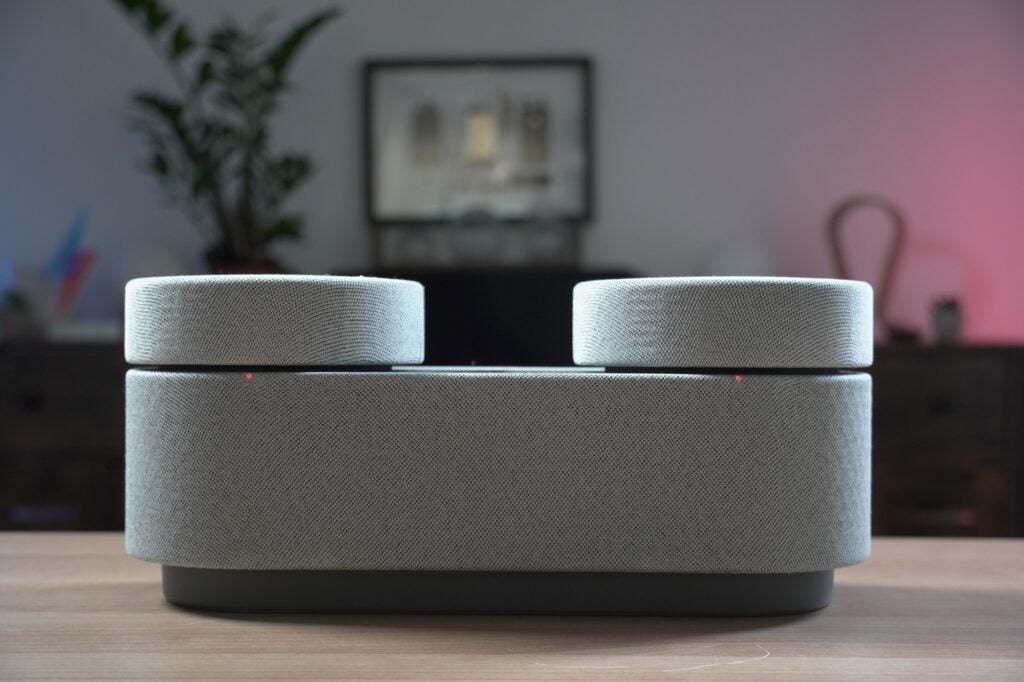
360SSM (360 Spatial Sound Mapping) works in concert with other object-based audio formats such as Dolby Atmos and DTS:X to create a room-filling, immersive performance.
When featured in compatible Sony soundbars and speaker systems, the built-in microphones will sense nearby surfaces (couches, walls, etc) to create a map of the room. It will use that map to calibrate the audio system’s delivery using psychoacoustics, tech similar waveform synthesis, and a “unique” Sony algorithm to create phantom speakers, giving the impression of sound coming from a certain area.

Finally, there’s 360VME (360 Virtual Mixing Environment), used by Sony Pictures, as well as The Hit Factory (New York), Gold Diggers Studio (Los Angeles), and MIL Studio (Tokyo)
This version of the technology is able to “accurately” reproduce the acoustic field of an immersive studio that consists of multiple speakers with headphones. Once the room has been mapped, if we understand this correctly, you can essentially take the measurement of the room and listen back on a pair headphones, creating a virtual studio as it were.
Those measurements can be only be done at the studios mentioned above. Though it does help that they’re come of the best in the world…
Is Sony 360 Reality Audio worth it?
This is an interesting question. There are so many facets to 360 Reality Audio, so many different but overlapping applications that it can be used for, that the way you experience it can differ but at its heart it’s all about immersion.
For headphones we’ve found it reasonably effective at creating a bigger soundstage with sounds that go around you, but like with Dolby Atmos, the quality of the experience can depend on how the track was mixed and effectiveness of the 360RA optimisation process.
We listened to Daft Punk/Pharrell Williams’ Get Lucky and didn’t noticed much of a difference pre and post-optimisation. And also, the song sounded better in stereo with bigger bass and vocals that weren’t as thin.
When 360RA works in tandem with Dolby Atmos in can be very effective in creating phantom speakers and a more immersive experience. We’ve played a Resident Evil game in 360RA spatial audio with the Inzone headphones and found that a suspenseful and gripping experience. If you have a soundbar, you’ll need rear speakers and subwoofer for the full experience, which will also add to the cost.
So in short it does work, and the experience is effective, though like most immersive audio it’s effective in the right setting, though 360RA tries to get around this with its mapping feature.
If you have a Sony product, it’s a nice benefit to have, but like with most immersive audio formats, it’s not essential – at least not yet.
FAQs
Yes it does. When enabled, head-tracking serves to automatically adjust sound as you move your head (in relation to the smartphone screen) – keeping the sound in its original position.




